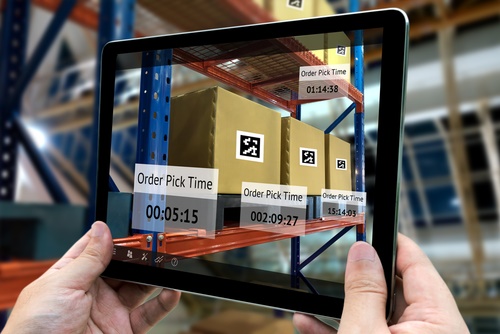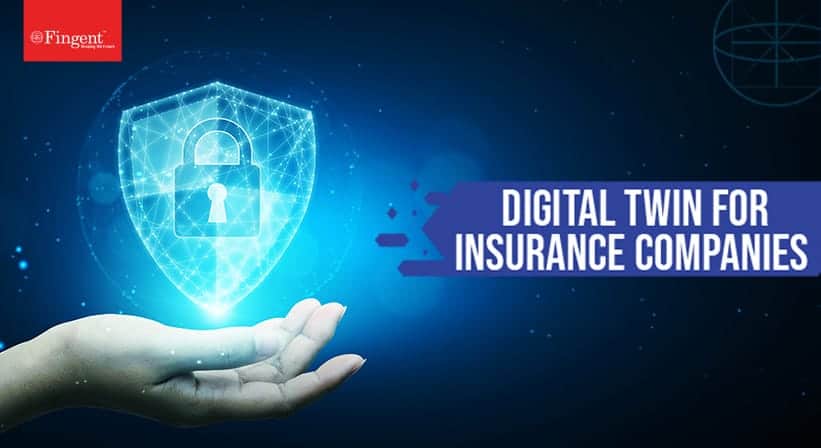Category: Digital Transformation
The transformative impact of blockchain remains much underestimated. While the concept is now associated with Bitcoins, the underlying technology could very well become the most important disruption since the arrival of Internet.
Blockchain in its purest essence is a distributed database, containing digital data. Users may access, inspect, or add to the data, but cannot change or delete it, making it tamper-proof. The original information remains as it is, leaving behind a trail, or a chain of transactions. Any single transaction would be a “block” in a never-ending chain, with the chain distributed across the internet, outside the control of anybody. Businesses leveraging block chains have an easier and safer mechanism to conduct transactions.
How Viable is Blockchain in the Supply Chain?
One area where blockchain technology is in the throes of making a big disruption is the supply chain of industries. In the existing system, the database is updated every time a movement or change takes place in the supply chain. With blockchain, every time a product changes hands, the transaction is documented, creating a permanent history of a product, from the point of origin to sale. In a traditional supply chain, each stakeholder maintains their respective records. With block chain, the records are distributed across the cyberspace, allowing for smart contracts. The distributed database runs on multiple servers, constantly checking the security and integrity of each transaction.
The application of blockchain technology in supply chain manifest in many ways:
- Real-time live recording of the quantity and transfer of assets, such as trailers, pallets, and containers
- Continuous tracking purchase orders, receipts, shipment related notifications, and other trade-related documents
- Assigning digital labels to physical goods, such as bar codes, serial numbers, RFID tags, and more. Blockchain allows connecting digital product information such as the source of origination details, batch numbers, factory and processing data, expiration dates, storage temperatures and shipping detail in a robust and inseparable way.
Improved Transparency
Blockchain brings about greater transparency in the supply chain. The log reveals the origins and touch points of each product, disseminating information on the manufacturing process, movements, and delivery, to all stakeholders. Such in-depth and finer details are not easily available now, and the potential applications of such transparency are earth-shattering:
- For perishable commodities, such as fish, blockchain records for each process, such as how and when the fish was caught or raised, whether it has been handled in a compliant manner, whether harmful formaldehyde was used in storing it, and more, increases consumer confidence and safety manifold. Walmart’s new Food Safety Collaboration Center in Beijing, where the company tied up with IBM and Tsinghua University to apply blockchain technology, to ensure food supply chain traceability and authenticity is a case in point.
- Blockchain logs make explicit the genuineness of a product, as in whether the product is really organic as claimed.
- An audit of blockchain logs make explicit whether the product was made using child labor, whether workers were paid fair wages, and whether there are any other ethically and/or legally reprehensible associations.
- Blockchain logs enhance safety. For instance, customers can track the components in their vehicle has come from an authorized manufacturer and has passed all recommended tests, increasing confidence, and reducing the risk of injury.
- In the case of defective products, the trial makes it easy to pinpoint the source of the problem and make effective amends. For instance, Blockchain production records enable tracing the place and time when a specific automobile airbags were made, allowing automakers to reduce their liability.
The trust and transparency that block chain infuses across the value chain become a new nexus for value exchange.
Security
One major impact of blockchain in the supply chain is improved security and accountability.
- The chain of logs ensures the authenticity of the product, and customers can verify the same automatically. With transactions tracked from the origin, a duplicate product or an unauthorized transaction is immediately flagged as counterfeit or theft.
- The permanent registry and verification assign tamper-proof individual identifiers to high-value products such as jewelry, making theft easily attributable. It also helps identify insurance fraud, which is a $60 billion industry in the USA.
- Blockchain serves as an escrow account, requiring all parties to confirm transactions. It eliminates the need for third parties, usually involved in the mix to ensure both parties honor their part of the contract. A shared, indelible ledger with codified rules also eliminates the need for audits.
The blockchain is on its way to enable more agile and secure value chains, with closer cooperation among stakeholders.
Process Improvements
The application of block chain in supply chain contributes greatly to process improvements.
- Blockchain logs make it very easy to detect errors or problems, and subject the supply chain movements to analytics to improve efficiency, on a dynamic basis. It also facilitates effective planning to improve processes.
- Blockchain delivers a decentralized architecture, which creates opportunities to innovate. For instance, intelligent block chain contracts query other nodes in the blockchain for the best pricing, delivery times, and other particulars. Smart shippers are already finding ways to leverage innovations to increase profits and strengthen relationships across the supply chain.
The application of blockchain technology enables tapping into rules-based intelligence, for executing business functions. Stakeholders may apply intelligent program code to embed conditions and other logic into contracts and other transactions, implemented automatically, with 100% accuracy. Manufacturers and other stakeholders can spare themselves of the copious amount of time, money, and other resources they presently spend to negotiate and communicate with other stakeholders.
The effectiveness of blockchain technology, however, depends not on blindly applying the technology per se, but developing solid and reliable apps that leverage the technology. The blockchain is only a facilitator, and it still requires cutting edge mobility solutions to power your supply chain to greater heights. Get in touch with a reliable partner for your business and mobility solutions requirements.
Stay up to date on what's new

Featured Blogs
Stay up to date on
what's new



Talk To Our Experts
Today’s highly competitive business environment demand business leaders lead from the front, with a proactive, hands-on approach. However, what often ties their hands are complex disjointed systems, non-integrated tools, and an overall lack of flexibility. Such stumbling blocks takes considerable energy, time and attention to resolve, which could be better spent on the core competency or revenue generating facets of the business.
The obvious need of the hour is simple and flexible systems that automate or executes routine tasks seamlessly without a hitch, in double-quick time. This, however, is easier said than done. The best-laid intentions to devise and implement such systems often fall flat on the face.
The solution is to elevate IT as a strategic partner, rather than a mere provider of infrastructure. While the basic role of IT is to provide the technical backbone that power the enterprise, today’s dynamic enterprises require these resources be set up and configured in a way organizational works are executed seamlessly, without a hitch. The onus is on the IT leaders to ensure the software overlay over the IT backbone, which
- delivers relevant real-time insights to supervisors, managers, and top management, fashioned the way they want it
- is customized to provide answers to the sales team and other customer-facing staff who meet customers on a daily basis
- Automates routine tasks, minimizing manual intervention
Remove the IT-Business Disconnect
IT has historically been seen as a “staff” function, whose role is to aid the core “line” activities. Many enterprises regard it as an unavoidable expense center, as opposed to a revenue-generating profit center. As such a dichotomy exists between IT and core operations in many enterprises.
CIO.com’s 2017 State of the CIO survey reveals that while 41% of chief Information officers regard their most important role as identifying business units that would benefit the most from using digital technologies, only 24% of business executives expect IT to contribute in the matter. Likewise, 64% of CIO’s opine IT being actively involved in recommending technology solutions but only 27% of business executives regard IT recommends technologies to support business initiatives.
One approach to reconciling the IT-business disconnect is to develop a shared service model that encompass not just IT, but the wider gamut of staff functions, including HR, finance, and other, to deliver back-office operations capabilities as required.
However, beyond such organizational tweaks, what is required is IT leaders leading from the front to drive the required transformation.
The obvious aim of enterprise systems is a seamless integration of all the information flowing through a company, ranging from financial information to inventory levels, and from operational process flow chart to customer information. However, managers and leaders are often straddled with incompatible information systems and inconsistent operating practices. Even majors such as Dell Computers found out the hard way its systems were incompatible with its new decentralized management model. FoxMeyer Drug alleges its Enterprise Management system drove it to bankruptcy above any other reason! While there could be several underlying causes for such epic failures, the root cause is often the software system imposing its own logic on a company’s strategy, culture, and organization, and the company unable or unwilling to accept it.
 Many systems push an enterprise toward generic processes, when the pressing need may be for customized processes, as a source of competitive advantage. The prerequisite for success in devising enterprise systems is a clear understanding of the business implications. Make sure the logic of the system does not conflict with the logic of the business. Many enterprises realize this fact, but try to change the logic of the business rather than the logic of the software. This is a recipe for disaster. Successful integrate requires changing the logic of the system to suit the logic of the business, however hard or technically complex the task.
Many systems push an enterprise toward generic processes, when the pressing need may be for customized processes, as a source of competitive advantage. The prerequisite for success in devising enterprise systems is a clear understanding of the business implications. Make sure the logic of the system does not conflict with the logic of the business. Many enterprises realize this fact, but try to change the logic of the business rather than the logic of the software. This is a recipe for disaster. Successful integrate requires changing the logic of the system to suit the logic of the business, however hard or technically complex the task.
Again, while full integration and abolition of silos are generally regarded as the best practice, at times, a certain degree of business-unit segregation may be in the company’s best interests. Understanding the reality, and designing systems accordingly helps the business have the best of both worlds.
Unlock New Possibilities
The onus is on business managers to identifying opportunities to remove unnecessary steps in business processes, using IT. Several processes, be it payroll or compliance, may be reduced either by automating a paper-based task or by eliminating certain task, effectively redesigning the work. The power of IT to simplify long and convoluted business operations remain grossly underutilized.
However, beyond such process improvements, the real power of IT, however, is in transformational capabilities. With the advent of big data analytics, business managers gain real-time insights from data pulled in from business processes and crunched through the analytics engine. Business managers could use the insights derived from analytics to fine-tune their strategies.
Marketers could use analytical data to identify when a customer is ripe for progression through the lifecycle, seize a new sales opportunity, and much more. The power business leaders and sales operations get when they have the latest red-hot information at their fingertips, to serve end customers are tremendous.
Key Challenges
The biggest mistake enterprises make is to embrace digital for digital’s sake. The obvious aim of embracing digital should be to create more digital touch points and connections for customers and improving delivery of products and services. Digital disruption without a positive light at end of the tunnel is doomed to end in failure. The onus is on IT leaders to provide a coherent customer-focused mission for the transformation.
to create more digital touch points and connections for customers and improving delivery of products and services. Digital disruption without a positive light at end of the tunnel is doomed to end in failure. The onus is on IT leaders to provide a coherent customer-focused mission for the transformation.
A good process is only one part of the equation. It still requires good people to pull it off. Bringing along the IT and the business operations staff, communicating the intent and the benefits clearly, and training up the talent pool for fluency in the technology and business processes are the key drivers of success in any transformative initiative. The onus is on IT leaders to take a hands-on approach when implementing a culture of transformation.
Your quest to business transformation is best served by partnering with an IT leader. We offer the right talent, the expertise, and the right knowledge to help you in the path. Our wealth of experience in developing cutting edge apps and other digital solutions customized to your exact requirements and tailored to fulfill all your needs help you institute seamless apps that allow processes to run by itself, freeing up your valuable time and resources to focus on this that matter.
Stay up to date on what's new

Featured Blogs
Stay up to date on
what's new



Talk To Our Experts
Success in today’s highly competitive environment is all about being fast and competitive, and this translates to shortening the learning curve when adopting new technologies. While training is touted as the obvious solution, most enterprises are caught in the trap of the obvious, failing to estimate whether training is indeed worth its while. The reality is much of the on-going employee training is worthless. McKinsey & Co. estimates training enhances the performance of only 25% of the employees.
Employers train the workforce, in hope, they gain competencies to handle a new technology better. However, today’s world is marked by fast-paced changes, and in a state of continuous flux. Change is the only constant, and the odds are by the time the trained employees gain mastery over the new technology, it may already be obsolete, to be replaced by something new. Just to put things in perspective, training certificates denoting competencies in Dbase, Foxpro, Sybase and many other technologies that were a rage not too long ago are now not even worth the paper it is printed on. Each new wave of tech advancements, such as the cloud, IoT, Artificial Intelligence, Immersive Technology, and others, demolish existing paradigms.
In the fast-changing environment, success depends not on training, but on adaptability. Only employees who have the skill-set to learn something new, and learn it fast without being spoon-fed, or wait for a formal training process, will succeed. Equally important is the uncanny ability to unlearn what is no longer required and may become counterproductive.
Another case against on-going employee training is its disruptive nature. Training is time away from what the employee is supposed to be doing, and cuts into productivity, with an uncertain promise of better productivity in the days ahead. There are too many variables in today’s fast-paced world to hold with any optimism the investment in training will recoup lost productivity in the future.
However, doing away with training and leaving employees on their own is akin to throwing the baby out with the bathwater. The solution rather is a shift in approach. The fact remains employees may remain technologically challenged with the new technology and may be hamstrung in doing their jobs optimally without training. The solution lies in adopting a new approach to training, along with a combination of intelligent work design, greater transparency, and developing “democratic apps” and other solutions.
Training Needs a Reality Check
Training requires a reality check. Training fails to realize its objectives mainly due to lack of strategic focus. Many enterprises go agog with the latest technology trends, rather than taking the time to understand the skills most critical to the business’s stage of development.
The most effective training offers practical skills critical to the present stage of organizational requirements. Training for anything not required in the next six months is pretty much a wasted effort. With high employee turnover, coupled with a short technology shelf-life, the only metric that really matters for the enterprise is the short-term or immediate return on the training dollar.
There is a need for effective follow-up as well. The American Society for Training and Development (ASTD) estimates U.S. firms invested about $156 billion on employee learning (2011), but as high as 90% of the new skills are lost within a year, owing to lack of follow-up to lock in the gains.
Road-test the training. Enterprises who do not give employees the opportunities to apply the newly acquired skills, by not facilitating them with the right tools and technologies are frittering away their investment in training.
The actual conduct of the training also makes a big difference. There is also a case of avoiding boring marathon sessions, which are disruptive in nature and offer training in short bites or capsules, preferably on the job. Hands-on training, during the course of work, offers promise for being most relevant, and the least disruptive. Upskill offers a competency-based training software for enterprises that combines advanced technology, quality content and expertise to discover potential and maximize the productivity of your workforce.
Intelligent Work Design
Success depends on making optimal use of every dollar. A part of the investment on training could be diverted to intelligent work design, to deliver much more efficient and long-lasting returns.
Intelligent work design makes work processes simple, and removes complexities from the equation, reducing or even doing away with the need for training. Automation of routine processes, and the use of Artificial Intelligence to relegate to the back-end many works that now require technical expertise would especially make the need for training redundant.
The Push towards a Learning Organization
Peter Senge, the noted management expert expounded the concept of a learning organization way back in the 1990s. Senge defines the learning organization as one where the enterprise nurtured and encouraged expansive patterns of thinking, the workforce continually expanded their capacity to create the desired results, and work together for the realization of mutual goals. In other words, employees are self-motivated and learn on their own
Greater transparency, mainly brought about by demolishing data silos and barriers of knowledge, makes many hitherto challenging tasks explicit and furthers the cause of a learning organization
Democratic Apps
Democratic apps leverage the power of simplicity, making the front end seamless and obvious without the need for any training for even the most technically challenged user.
Side by side with democratic apps, there is also a case for promoting the BYOD culture. When employees bring their own familiar device, they can handle most of the workflows without a learning curve.
It requires professional expertise to redesign systems, and roll out highly intuitive apps that take the complexity out of the equation. With our extensive experience cutting across sectors, and our highly skilled talent pool, we are ideally poised to partner with you in the quest to develop intelligent mobile solutions that reduce your training budget.
Stay up to date on what's new

Featured Blogs
Stay up to date on
what's new



Talk To Our Experts
There are components in business that ride the wave of time to have halo’s associated with it, when space, time and the event coincide, the companies that wear the halo accelerates its reach and hits the bull’s-eye. The resulting amalgamation of people, processes and ideas have time and time again celebrated success. This has been etched in stone, but what’s more contrasting and less surprising is that the components that create the halo is never the same and are subjected to disruption from around. There were innovations that elevated organizations and disruptions that have catapulted few others to the top. Particularly, the digital forces that once was touted as a disruption, which is now increasingly becoming the norm for the future.
The Whole Picture
Digital Transformation is not about islands of digitization like digital marketing, digital customer behavior or transformation from paper to digital media within an organization, rather it is a demanding process that requires considerable time, holistic thought and skilled people to guide the transformation process. The change has to be ideally driven from top-down, where the business leaders can put together the pieces of the digital puzzle thus enabling a rapid transformation in the business processes, activities and work models to move faster and efficiently to meet customer and business needs. This transformation of business by leveraging technology ultimately rests on the people who can drive the change into all layers of the organization.
Common Frontiers, Different Approach
Digital as the way forward is being experimented at varying degrees and varying pace by organizations. Some become more successful than the other to make this change a holistic one that touches the entire organization. The successful organizations show traits of digital maturity that touch different areas within an enterprise like Marketing, Operations, HR and Customer service; business models that unite these areas, and processes that embed efficiency through business automation, optimization, and management.
The foundation of successful transformation into the digital realm lies in organizational change, this change needs to address some key areas:
- For existing business, there is a need to take stock and understand why to transform, what to transform and how to transform. Once the reflection is carried out and you have figured out the answers to these questions, you should ideally start your mission to a digitally modified business. Improving on digital lines can help to have improved decision making by the use of big data, analytics, creating an effective corporate control, Risk optimization by automating manual labor, improved targeting with insights from customers, augmentation of traditional channels into digital and whenever wherever service propositions as well. Granted your journey would require much change from the status quo, and even you may not be as digital as a “Born Digital” company, but effective action can leverage the existing business, giving better reach to help multinational companies to truly have global operations.
- For an organization, Digital transformation process is multifaceted. Right from the beginning, it is essential that the organization has leaders with the potential to drive this change. The company has to make changes in their best practices in business architecture, BPM, continuous improvement, continuous innovation, crowd computing etc. Latest tools for robotics and sensors that can automate much of the mundane, so that the organization can focus on building lasting relationships with the customer. A mix of digital technologies, tools, and best practices can set the stage for Digital Transformation.
- The end part of the digital transformation is the customer experience. The models, the processes and the coherence of the activities carried out within an organization should ideally drive the customer journey with an emphasis on the physical and digital touch points. With Digital it is possible to effectively map this journey by understanding the way the customer interacts with business and brands, this invariably helps to find the best-fit solution for the customers. This is made possible through the combination of software, IoT, Big data, Mobile, CRM, Augments reality etc. In reality, a company may not be able to perform all these alone, it would have to seek partners that can run part of the show for them so that the companies can, in turn, focus on building their main offering.
The final touch points, like the interface, should invariably help the customer feel at ease and add touches of modernity. Looks aren’t everything, but when you and your competitor have the same product, looks, and a streamlined interface would come in handy
The Digital Wave doesn’t mean to throw away the method in which the business is being currently being conducted, rather it should dovetail and leverage the current best practices. When this is executed in the right way, the businesses can cater to a wider array of customers, speed to hit break even in shorter time, improve workflow employee efficiency within the organization. All companies irrespective of the segments they cater must invest proportionally so that risks can be mitigated and key opportunities are addressed in the most prudent way.
Stay up to date on what's new

Featured Blogs
Stay up to date on
what's new



















